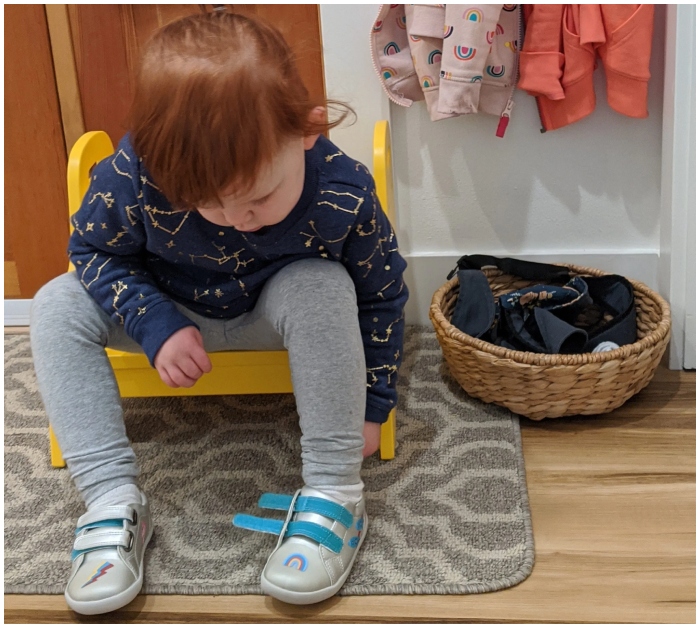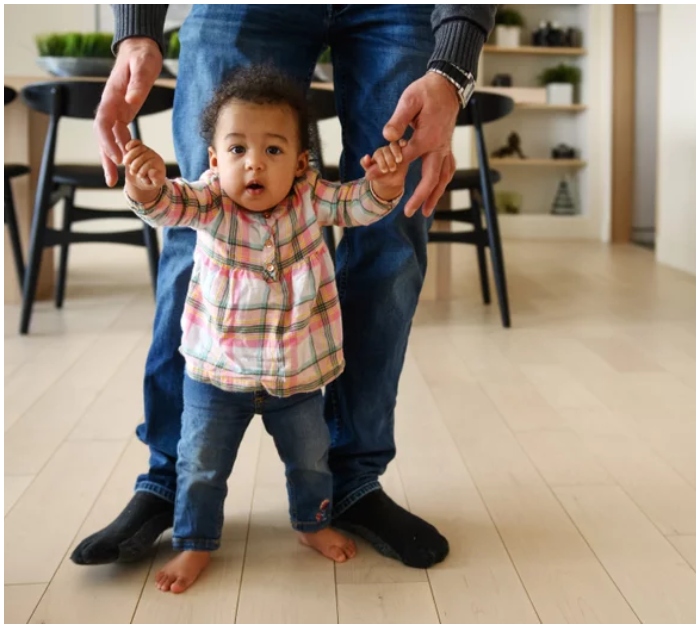Understanding your child’s foot growth and development is crucial for ensuring their overall health and mobility. The foot’s complex structure, which includes 26 bones and 35 joints, is supported by an intricate network of ligaments. Here’s a detailed guide on foot development in children and selecting the right footwear to support their growth.
Developmental Stages of a Child’s Foot
From birth, a baby’s foot is notably soft and padded with fat, making it extremely flexible. Most children start to walk between 8 and 18 months. Early in their walking stage, it’s common for toddlers to appear flat-footed or to turn their feet inward due to underdeveloped muscle strength and ligament stiffness. These conditions usually improve as their musculoskeletal structure matures and strengthens with growth.
Monitoring Your Child’s Walking Pattern
Observing how your child walks—their gait—is essential. If you notice any abnormalities, consulting with a podiatrist or pediatrician is advisable. Early intervention can prevent potential issues from affecting the child’s ability to walk comfortably or naturally later on.

The Role of Proper Footwear
Footwear plays a significant role in protecting a child’s feet from injuries and environmental conditions such as heat and cold. When children are learning to walk, being barefoot or wearing soft-soled shoes can help them receive important sensory feedback from the ground, promoting muscle strength and motor development. As children become steadier on their feet, they should transition to firmer-soled shoes to support their developing arches.
Choosing the Right Shoes
Properly fitting shoes are fundamental for healthy foot development. Here are some criteria to consider when purchasing children’s shoes:
- Fit: Ensure shoes fit well in both length and width.
- Toe Room: Shoes should offer ample space for toes to move freely.
- Sole Flexibility: Look for shoes with flexible, flat soles that allow natural foot movement.
- Shape: Prefer shoes that are wider at the front than at the heel to match the natural shape of a child’s foot.
- Heel Support: A solid heel counter provides necessary stability for the foot.
- Secure Fastenings: Choose shoes with laces, straps, or fasteners that prevent the foot from moving too much inside the shoe, reducing the risk of blisters or falls.
Children’s feet grow rapidly, and their shoe size may need frequent updating. It is important to check their shoe fit regularly, as tight shoes can cause problems like ingrown toenails.
Common Foot Conditions in Children
- Flat Feet: It’s normal for infants and young children to have what appears to be flat feet. As the child grows, typically by age six, most develop a normal arch.
- In-toeing and Out-toeing: Many young children walk with their feet turned either inward or outward. These conditions often resolve independently as the child’s posture and balance improve with age. However, if these conditions are severe, do not improve, affect only one leg, or cause pain, professional evaluation is necessary.

Signs of Potential Foot Problems
Be vigilant and consult a healthcare provider if you notice any of the following in your child:
- Abnormal toe shapes or positions.
- Persistent or painful ingrown toenails.
- Bunions or other visible deformities.
- Stiffness in the feet.
- Limping or uneven gait.
- Complaints of pain while walking or favoring one leg.
- Severe in-toeing or out-toeing.
- Complaints of pain associated with flat feet or limited function.
- Any abrupt change in the way your child walks.
- Delay in walking milestones, such as not walking by two years of age.
Additional Tips for Managing Your Child’s Foot Health
- Footwear for Growth: Children outgrow their shoes quickly, so opting for slightly larger sizes can be practical. However, ensure that oversized shoes do not compromise their walking ability or safety.
- Material Considerations: Soft, breathable materials like cotton are ideal for children’s shoes. Organic materials are often preferred for their lack of harsh chemicals.
- Routine Checks: Regularly inspect your child’s feet for any signs of discomfort, irritation, or unusual wear patterns in shoes, which could indicate improper fit or foot problems.
Proactively managing your child’s foot health can prevent numerous issues and aid in their active exploration and enjoyment of the world. Regular monitoring and updates to their footwear are crucial for fostering healthy foot development.